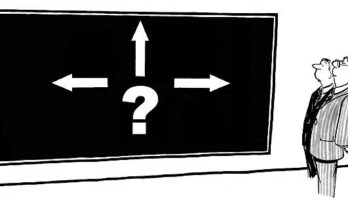HOW TO CREATE A MODERN WEBSITE: YOUR BUSINESS GUIDE
It takes some research, persistence, and the unshakable motivation that is necessary while learning a new skill to learn how to create a modern website. It can seem overwhelming if you’ve never designed a modern website before. We’ve put together a thorough step-by-step guidance and helpful materials to assist you through this process of creating modern website.
Goal and scope of modern website

IMAGE CREDITS: istockphoto.com
It’s crucial to initially determine the website’s purpose and objectives, whether you’re developing it for yourself or a customer. Every website aspires to provide a pleasing user experience and attractive design, but they also need to reach (and expand) a target audience.
Sometimes clients will approach you with their purpose, goals, and objectives as well as their branding and content already complete and prepared for CMS implementation (content management system). However, some customers will look to you for advice on how to create a new website or redesign one they already have.
Research and content planning of modern website
You may begin designing textual and visual material that will keep website visitors interested once you know your why, what, and how.
Start by investigating your rivals. Visit their websites to see what you like (and dislike). Pay close attention to the user experience (UX) and the user interface (UI) (UX). Look over their content quickly to determine which headlines, images, or other elements pique your interest.
Draw ideas from current web design trends and publications like Made in Webflow or Dribbble. Make a note of any design features, language, or content arrangement that you believe could benefit your audience.
Designing brand identity of your modern website

IMAGE CREDITS: istockphoto.com
A brand could be a person’s or of a business. It includes both the general personality of your business and your visual identity, which includes your color scheme, typography, logo design, and website.
If you’re developing a website for a business, it’s probable that they have their own branding and style standards that specify their brand identity, including the colors, typefaces, and logo variations that you can use on the website. However, there are several crucial components to take into account if you’re starting from scratch: color scheme, font, artwork, and overall voice and tone.
Creating wireframes and draft site copy of a modern
Essentially mockups, wireframes are used to lay out design components during the planning phase of website design. Imagine them as the blueprints that outline the overall structure and navigation of a website.
By visualizing your content with wireframes, you can create its framework before adding photos, editing text, or adding extras like animations or parallax scroll effects.
Wireframes compel you to take into account how website users will engage with the information. View the example wireframe that is provided below. A navigation bar with drop-down menus, a carousel of featured photographs, and designated areas for videos, news articles, and a music player are all depicted in the drawing.
Choosing website builder

IMAGE CREDITS: istockphoto.com
Now is the moment to choose a platform if you haven’t previously done so for web development.
Although WordPress, Wix, Squarespace, and Shopify are other frequently used platforms for web design, web development, CMS, and ecommerce, it’s clear that we have a bias in favor of Webflow. It is important to remember that each of these platforms has drawbacks and restrictions.
Start building your modern website
- The content of a webpage and its structure are both written in HTML (hypertext markup language).
- The way the text is designed and presented is through CSS (cascading styles sheets) (think fonts, colors, positioning, etc.)
- Databases are used to store content.
- To turn these components into a webpage and then an entire website, you often require code, as well as a database to hold the code. Webflow, on the other hand, takes care of this for you by combining these elements in the Webflow Designer and Editor.
User testing and feedback
You don’t want launch day to be the first time someone visits your website. Ask friends and peers to test the user experience once you have a draught version of your website.
At this point, you’re asking for comments on the overall aesthetic and feel of the website as well as the user experience it offers. A Google Form or Typeform, Airtable answers, a Miro board, or even written notes you take while discussing the site with your reviewers can all be used to gather and organize comments.
Publishing your modern website
IMAGE CREDITS: Unsplash.com
Click publish if Webflow is the platform you’re using to develop your website. All you need is your own custom domain because Webflow already provides hosting within the platform. If you haven’t already purchased a domain, you can do it directly through GoDaddy or Google domains in Webflow or through your preferred service.
Managing and updating your modern website
Once you’ve finished designing the website, your work is not done. You must constantly get better if you wish to progress.
Make sure you configure Google Metrics or comparable options to monitor website analytics. You can monitor website traffic using website analytics tools to learn which web pages bring in new visitors and, hopefully, keep them interested while they’re there. Observing how users navigate your website might help you organize your information better and improve user experience.
You must evaluate the performance of your website using tools like PageSpeed Insights and Google Search Console, among others. Performance can refer to technological elements like the speed at which a website loads or how well it performs in search engine results. You can use that information to guide your future website optimization tactics.
USEFUL LINKS:
- https://webflow.com/blog/how-to-design-a-website
- https://logicalmediagroup.com/blog/7-tips-to-make-your-web-design-look-more-modern/
Buy best lamp to buy for work at night, see: https://theperfectblogger.com/best-desk-lamp-for-working-at-night/
Find everything you need to know about software and computers: https://theperfectblogger.com/computers-and-software/






One Comment on “HOW TO CREATE A MODERN WEBSITE”